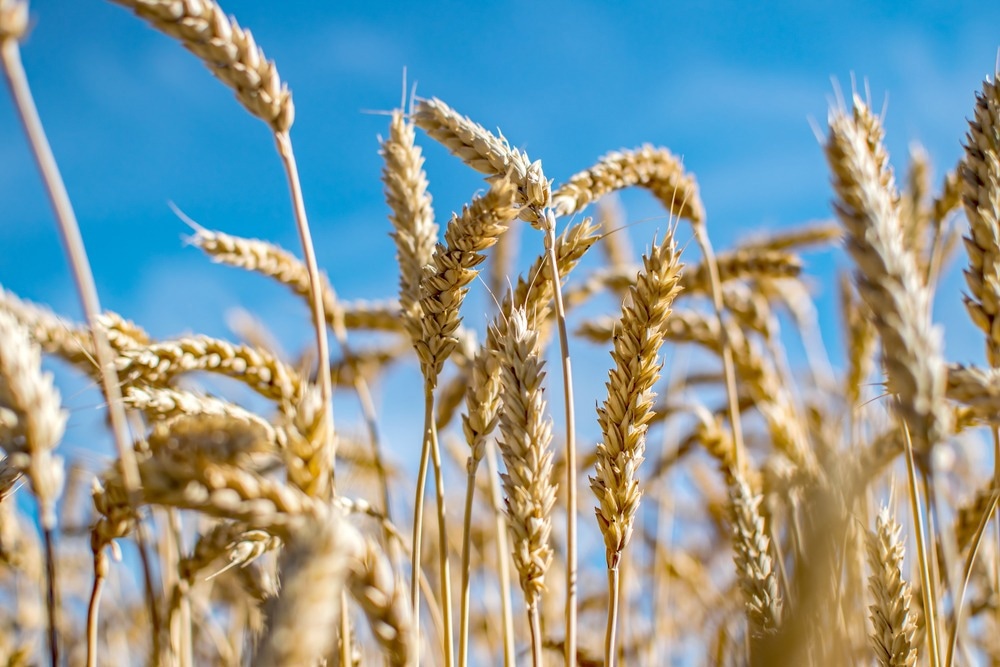Proteomics, or the study of proteins, has provided a better understanding of how organisms respond to stress, how genes function, and how organisms develop different characteristics. These can be harnessed readily to improve agricultural productivity, increase food nutrition, and reduce allergen content, contributing to better food security in a rapidly changing world.

Image Credit: MangKangMangMee/Shutterstock.com
The need for molecular tools to support food production
Around the world, an estimated 925 million people suffer from undernutrition, a number predicted to grow to 2 billion people by 2050, according to the United Nations estimates. Despite being a fundamental principle outlined in the millennium goals, malnutrition remains rampant, and food production needs to be increased to sustain such rapid population growth. However, the availability of arable land is diminishing, and so is soil health, which, in combination with climate change, is leading to reductions in food production.
New elements must be integrated to strengthen plant breeding to achieve better food production with existing space and resources. In turn, better plant breeding programs will lead to crop improvements by improving the resilience and resistance of plants, resulting in higher overall production. This has been the focus of efforts in biotechnology over the last decades, which has harnessed a combination of so-called ‘-omic’ technologies to strengthen plant breeding programs using molecular tools.
Within the development of -omic technologies, proteomics typically refers to the analysis of the proteome, which is a concept describing the complete set of proteins produced by a given cell or organism. Therefore, proteomics addresses protein functions and dynamics on a system-wide level and generally focuses on proteins occurring under a given set of abiotic or biotic conditions. As a result, proteomic analyses can provide critical insights into the environmental impacts and human-induced effects on protein systems.
The use of genomics, proteomics, and other associated -omic branches of biotechnology was further discussed by Eldakak et al. in 2013. Authors presented how emerging -omic tools have accelerated the development of stronger, more productive, and longer-lasting crop breeds, proving an effective way to accelerate crop improvement programs worldwide. In turn, progress has led to a wide range of applications contributing towards better crop production for sustainable agriculture.
The progress of proteomic analysis in agriculture
Proteomics has enabled it to identify a wide range of proteins that play key roles in maintaining crop health, resistance to stressors, and improving product quality. The characterization of specific genes provides researchers the ability to monitor crop response under adverse conditions or even predict the nutritional value of crops. Specifically, targeted genes may be more or less expressed under certain conditions, and these changes can now be identified.
A 2007 review by Ghasem and Setsuko describes the progress in crop proteomics. Across the literature, the focus of proteomic studies is the response of crops to abiotic stresses, which remains the most significant cause of crop losses in modern agriculture. The authors highlight that proteomic data can be easily collected, allowing better applications to practical crop breeding.
The gradual accumulation of information derived from proteomic analyses allows for a better understanding of the genes and pathways involved in stress response and tolerance. The technical aspect of proteomic analyses has also improved over the years, as new and improved tools have enhanced the quality of the extraction, separation, quantification, and identification process. For instance, breakthroughs in high-throughput analysis of crop proteins have allowed more data to be collected at once, reducing errors in assaying protein levels.
A 2022 study by Farooq et al. further discusses the potential and progress of proteomic analysis in understanding crop responses to abiotic stress. The authors discuss how the progress in proteomic analyses has made procedures highly reproducible and affordable. Combined with the increasingly available genome sequences, key information is being made available for researchers worldwide to develop and improve methods and find new applications for proteomic analyses.

Image Credit: Tanya Kalian/Shutterstock.com
The future of proteomics - food quality, allergens, and potential applications
Beyond crop reproduction and the ability to breed more tolerant crops, proteomics is increasingly applied to increase food nutrition. Specific markers can be identified to process foods of different qualities and choose the highest-quality crops.
Developing such markers can also be done alongside increasing plant tolerance. Indeed, plants such as tomatoes decrease the expression of invertase genes under elevated temperatures, which is also associated with high sucrose levels, helping to produce sweeter tomatoes. As a result, proteomic studies on stress tolerance can also be related to other plant characteristics, including taste and nutritional value.
Another rapidly developing field in proteomics is the study of food allergy. Proteomics can be used to identify and characterize allergens, including albumin and globulin, and has already been achieved in studies considering different wheat strains and sesame seeds, for which allergenic proteins were identified at different stages of plant development. In turn, targeting allergen-expressing genes may provide a useful tool to reduce allergen content and lower the number of allergen groups in different plant strains.
A 2013 review by Boggess et al. discusses in further detail the transformational potential of proteomics and its contribution to agricultural productivity. The authors discuss how emerging biotechnology can bolster food security across plant and animal agricultural practices. The review concludes that the most effective progress will be achieved through a three-pronged attack by combining genomics, proteomics, and metabolomics, ensuring global food security and safety.
Sources:
- Boggess, M. V., Lippolis, J. D., Hurkman, W. J., Fagerquist, C. K., Briggs, S. P., Gomes, A. V., Righetti, P. G., & Bala, K. (2013). The need for agriculture phenotyping: “Moving from genotype to phenotype.” Journal of Proteomics, 93, 20–39. https://doi.org/10.1016/j.jprot.2013.03.021
- Eldakak, M., Milad, S. I. M., Nawar, A. I., & Rohila, J. S. (2013). Proteomics: a biotechnology tool for crop improvement. Frontiers in Plant Science, 4. https://doi.org/10.3389/fpls.2013.00035
- Khan, I. M. R., Reddy, P. S., & Gupta, R. (2022). Advancements in Developing Abiotic Stress-Resilient Plants: Basic Mechanisms to Trait Improvements (1st ed.). CRC Press.
- Salekdeh, G. H., & Komatsu, S. (2007). Crop proteomics: Aim at sustainable agriculture of tomorrow. PROTEOMICS, 7(16), 2976–2996. https://doi.org/10.1002/pmic.200700181
Further Reading
Last Updated: Oct 26, 2022